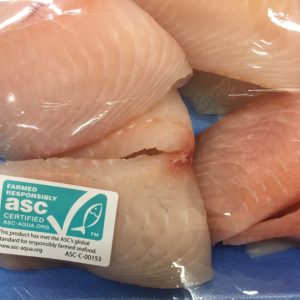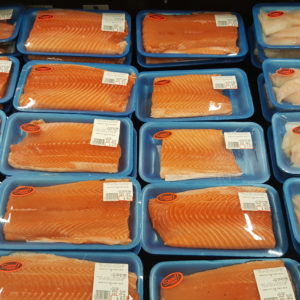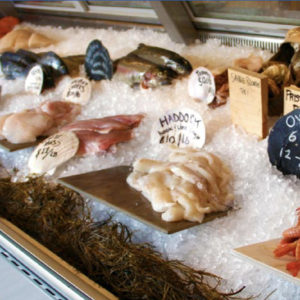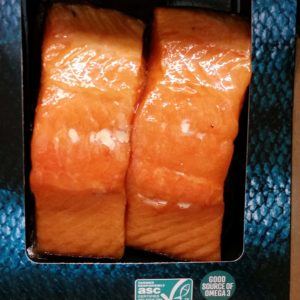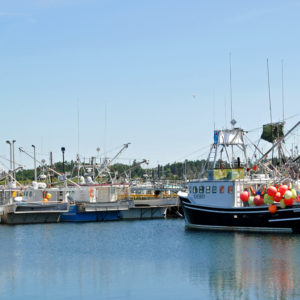ASC Variances and Process
ASC-sanctioned changes, known as variances, have the potential to weaken standard criteria that certified farms are held to.
SeaChoice’s reports, What’s Behind the Label and Global Review of the ASC Salmon Standard, found that the Aquaculture Stewardship Council’s (ASC) variance process is overriding the multi-stakeholder agreements on which the Salmon Standard’s social licence is based. Variances in the auditing and certification process for fish farms are approved departures or exemptions from the Standard criteria. In fact, variances from the ASC Salmon Standard enable British Columbia (B.C.) farms to be certified when, based on the Standard’s criteria, they should not be.
Heeding SeaChoice’s calls to stop approving variances behind closed doors, in 2020 the ASC revised its process to include regional stakeholders and independent subject-matter experts. SeaChoice commended the process improvement, however, many problematic variances remain in use by auditors.
Variance requests allow auditors to seek an ASC interpretation of, or variance from, either a Standard criterion or a formal requirement of the audit process. Requests are submitted directly to the ASC’s Variance Request committee. Prior to 2021, the process lacked stakeholder engagement or third-party oversight.
Once a variance has been approved, it can be re-applied to “an identical situation”. This has resulted in auditors frequently reapplying variances in a blanket form — across regions and regulatory regimes.
ASC’s own accreditation body, Accreditation Services International (ASI), warned ASC that variances that substantially alter the intent of the Standard and are “probably putting at risk the program integrity”. They further stated, “In case a Variance Request changes the original intent of the Standard, it is recommended that this should not be possible without public consultation and stakeholders review”.
Due to SeaChoice’s work, in 2020 the ASC published a revised variance request process that now includes stakeholder consultation and potential technical input. The process was operationalized in 2021. However, a number of problematic previously approved variances remain in use.
Variances granted with respect to the Salmon Standard criterion for sea lice levels defer to DFO’s Pacific Aquaculture Regulation defined three motile L. salmonis per fish instead of the Salmon Standard’s threshold of 0.1 female lice per fish during sensitive wild fish migration periods. The variance has been applied to benefit all B.C. salmon farms.
Audit evidence shows that auditors routinely cite the variance number and the PAR regime, but no compliance with a metric threshold is required — no upper limit on absolute lice abundance or on lice per fish is applied. This has led to the anomalous situation in which farms with adult L. salmonis levels as high as 19 motile lice per fish are being certified.The farms were simply exempted from complying with this aspect of the Standard.
Due to SeaChoice’s work, in 2021 the ASC revised the sea lice variances. Certified B.C. farms continue to defer to the PAR regime’s Conditions of Licence, but farms that are unable to bring down sea lice levels to below the three motile per fish threshold within 42 days are no longer able to sell their fish with the ASC label. While the revision is an improvement, it still allows certified farms to host dangerously high lice levels for over a month during the sensitive period – placing juvenile wild salmon out-migration at risk.
Elsewhere in the world ASC has approved variances that substantially alter the Salmon Standard in practice and allow farms that may not otherwise pass their ASC audits, to become certified.
For example in Australia, ASC defers to local regulation for benthic and water monitoring. This results in Tasmania salmon farms being exempt from two environmental indicators of the standard. Benthic and water quality impacts from salmon farming remain a serious concern in some parts of Tasmania. In 2021, a WWF-Australia commissioned report found that ASC’s approval of problematic variances (as well as other key findings) likely contributed to delayed action to address and reverse significant benthic impacts at Macquarie Harbour ASC certified farms.
ASC certification of salmon farms using varied criteria also impacts the work of other certification and ratings schemes, such as the popular Monterey Bay Aquarium Seafood Watch program, and misleads consumers. In December 2021, the Seafood Watch program red-listed B.C. farmed salmon – confirming seafood shoppers should avoid buying the product. Yet, despite the fact that ASC-certified farms (with variances) produced the red-rating, Seafood Watch continues to recommend ASC-certified salmon as a “buy” option. SeaChoice has urged Seafood Watch to withdraw their endorsement, which is 1) based on an outdated benchmarking review that looked exclusively at the Salmon Standard as written and 2) did not review varied criteria. For example, the ASC-approved sea lice variance, which allows for high lice loads on B.C. salmon farms, was not factored into Seafood Watch’s review of the Salmon Standard.
Why does it matter? Sea lice outbreaks on B.C. farms were a primary reason for Seafood Watch’s red-rating of the industry, due to the detrimental impacts farm-derived lice can cause to juvenile wild salmon.
The use of ASC’s variance process to allow salmon farms that may not otherwise pass their audits to become certified is a concern and causes a ripple effect through global supply chains and the seafood sector. We urge you to continue to follow the issues, educate yourself, and share your thoughts directly with ASC through their input channels.
Stakeholders to the industry can sign up to be consulted on ASC variance requests by emailing VR@asc-aqua.org
Further Information on our MSC and ASC work:
What’s Behind the Label Report
ASC Global Report
Standard and Audit SeaChoice Submissions
Improving Eco-certifications
Eco-certifications, Rankings and Claims
